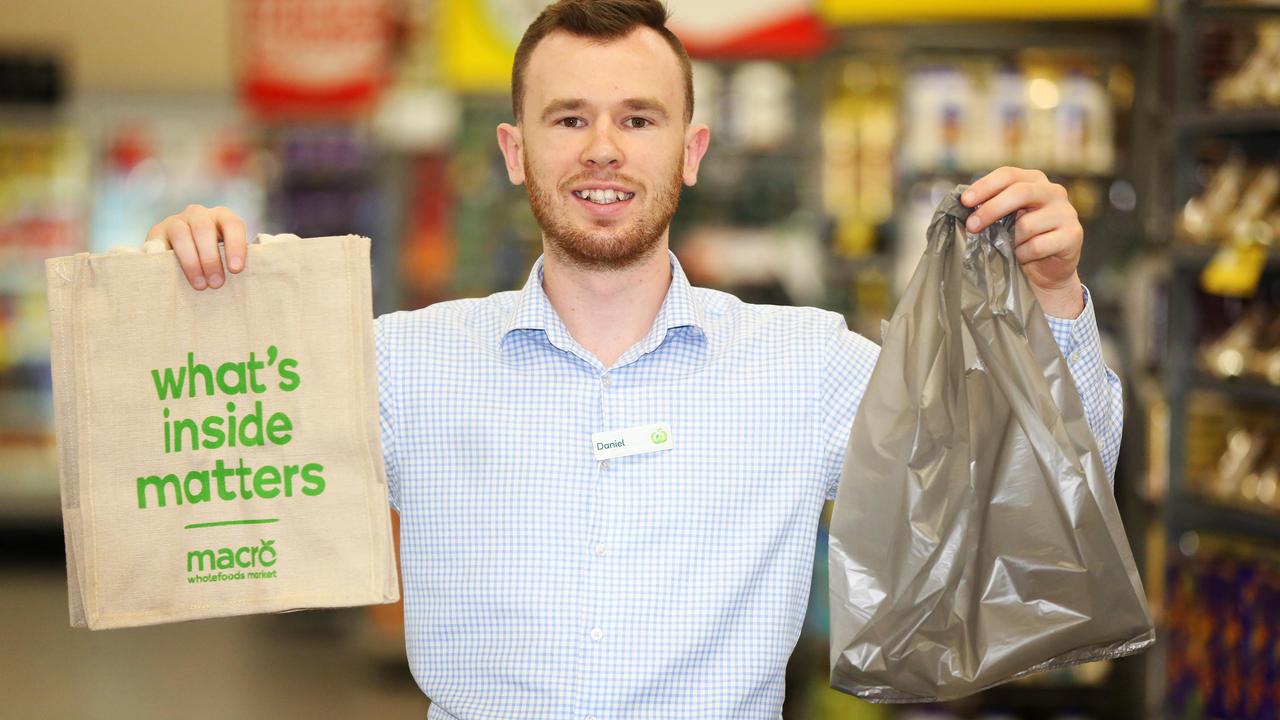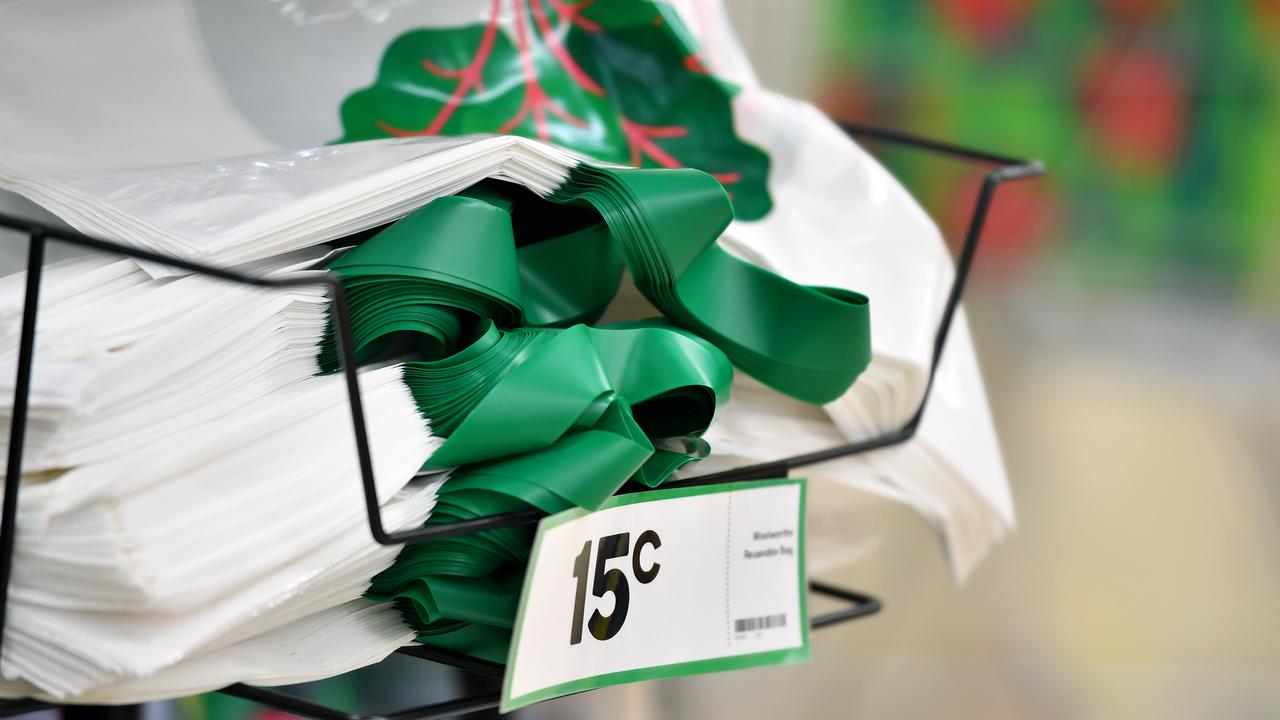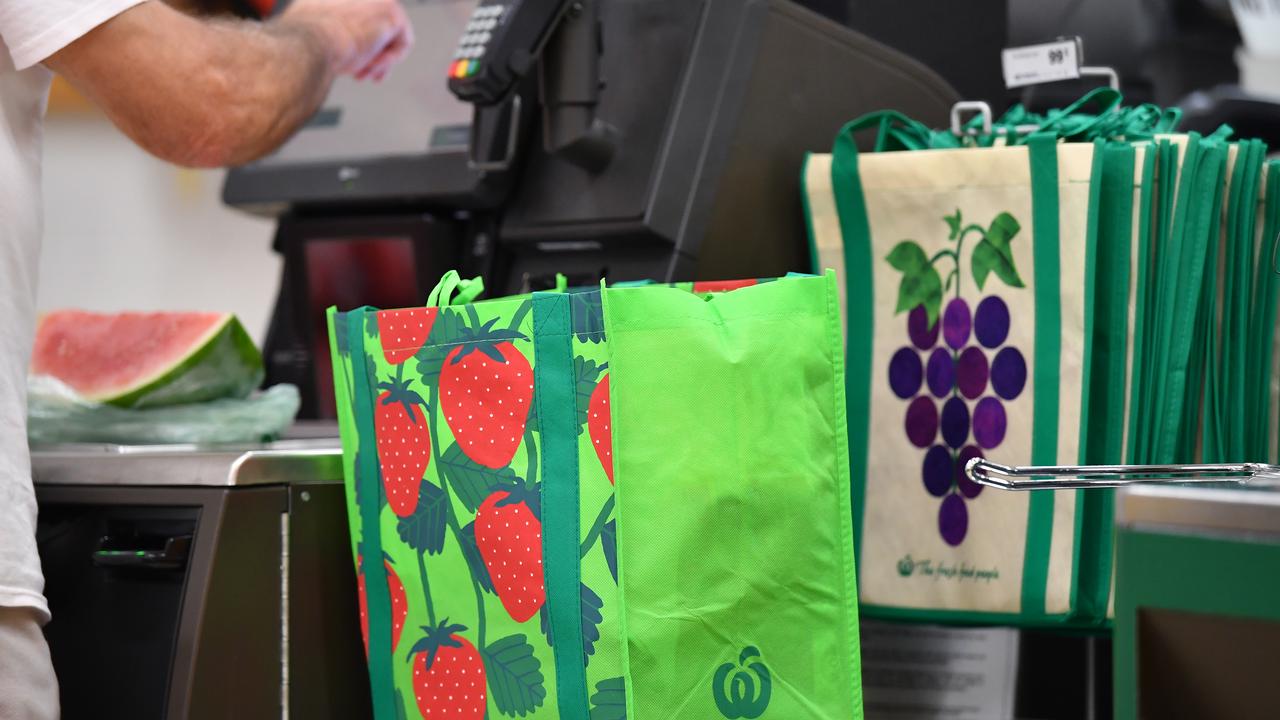Plastic bag ban: Many alternatives have huge environmental footprints
THE supermarket plastic bag ban is here. But what you haven’t been told is that the change may actually turn out worse for the environment.
FOR many of us, the trip to the shops will change forever today when Woolworths bans plastic bags, ahead of a wider ban in most states and other supermarkets on July 1.
But sustainability gurus, while welcoming the sentiment of the bag ban, have questioned if it will have any real effect. And there are warnings the reusable alternatives could easily end up being worse for the environment — and we’re one of the problems.
“The single use plastic bag ban is a positive step to try and reduce resources but that’s tempered by the fact people need to use reusable bags wisely,” Trevor Thornton, a lecturer in hazardous materials management at Deakin University, told news.com.au.

In 2007, prior to any bans, Australians used four billion single use plastic bags annually.
South Australia was the first to phase out thin plastic bags in 2009; the ACT and Northern Territory followed in 2011, while Tasmania banned them in 2013.
Queensland, Victoria and Western Australia will ban them from July this year. NSW has not enacted a ban but with Woolworths and Coles jumping on board on June 20 and July 1 respectively, it’s effectively a national bag boycott.
The axe is being lauded by many with Victoria’s Environment and Climate Change Minister, Lily D’Ambrosio, saying the ban will “slash waste, reduce litter and help protect marine life”.
Woolworths chief executive Brad Banducci said it was the right thing to do: “We currently give out more than 3.2 billion lightweight plastic bags a year and hence can play a significant role in reducing overall plastic bag usage.”

But research on how we use carrier bags, some commissioned by Woolworths itself, has shown that reducing their environmental impact could be more problematic than many of us assume.
A 2009 report produced for Woolworths by researchers at RMIT calculated the environmental impact of single use carrier bags versus their reusable counterparts.
The classic supermarket bag, the type being banned, is made from high density polyethylene (HDPE). Compared to other bags it’s not that great environmentally — but it certainly doesn’t have the worst impact.
On measures such as its contribution to global warming and water usage, it actually scores well. In landfill they compress and so take up very little space. But it falls down on energy consumption and the effect on marine life.
Other research has said light density polyethylene (LDPE) bags, the thicker type available for a few cents at the supermarket, are generally worse than their thinner counterparts.
So called “green bags” made from polypropylene (PP), use fewer materials but produce a lot of waste, but overall they are better than HDPE bags.

SOME PLASTIC BAG ALTERNATIVES NEEDS TO BE USED 131 TIMES
The worst bags are actually paper bags. Sure, they break down after use but the energy consumption and materials used to produce them are off the scale.
Taking all this into account, the report was able to work out how many times you needed to use an alternative to a single use plastic bag for it to have a lesser impact on the environment.
“The benefits of a reusable bag are highly sensitive to the number of times each bag is used during its life,” said the report. “For example, if a reusable PP green bag is only used 52 times (weekly for a year) instead of the assumed 104 times (weekly for two years) then its impact on global warming is higher than the impact of each of the single-use bags except the paper bag.”
Other reports confirm plastic bag replacements are far worse environmentally if they are only used a handful of times and then loiter, unloved, in a corner.
A 2016 report by the NSW Environmental Protection Agency (EPA) found a cotton bag had to be used 131 times to equal the environmental impact of an HDPE bag used just once. A 2006 UK Government report came to a similar conclusion.
A paper bag has to be used three times and a thicker LDPE bag four times. The EPA’s report doesn’t concur with Woolworths on how many times a green bag has to be used, but it does have to be reused on multiple occasions. They suggest a green bag has to be reused 11 times for it to equal one current bag.

SINGLE USE BAGS ARE USED MORE THAN ONCE
However, “single-use” plastic bags aren’t really used once at all.
“Most shopping bags are used twice because people take them home and use them as rubbish bags or for picking up dog poop and that further reduces their environmental impact,” said Dr Thornton.
Every time an HDPE bag is reused, the environmental hurdle other bags have to jump over to better them increases. Paper bags, which aren’t all that strong, have to be used six times; green bags 20+ times and a cotton bag more than 260 times.
If you use a plastic bag to carry your shopping home, take your lunch to work and then pick up your pet’s waste then, according to Woolies figures at least, you might have to use your green bag hundreds of times for it to be truly green in comparison.

Dr Thornton said constant reminders will now be needed, like signs in supermarket car parks, to ensure people don’t forget their bags or they will just buy the reusable variety again and again.
Additionally, as soon as HDPE bags are gone, sales of plastic bin liners will likely soar, he said. We need to break that habit.
“We need to start educating people to stop using bin liners — our grandparents didn’t need to put rubbish into plastic bags just to put in the bin.
“We get all these recycling messages but the message should be about avoidance.”
UNSW’s Prof Sami Kara specialises in sustainability and life cycle engineering. He told news.com.au that while the ban was useful in changing behaviour it was a “short term solution” that likely wouldn’t reduce plastic waste. Rather, the ban was occurring because plastic bag litter was just more noticeable.

SCARY
“When we talk about banning single use plastic bags we’re talking about littering. When people see plastic bags it bothers them and that’s why society decided to act on it. But plastic bag littering is the tip of the iceberg; what is underneath is even more scary.”
What scares Prof Karma is that as the globe’s population grows and becomes increasingly affluent, demand for products that contain plastics will only increase. The rubbish produced will far outweigh the gains made by a plastic bag ban.
“We have replaced lots of traditional materials with plastics — even clothing which is full of synthetic fibres. A recent study in Europe found when we wash these clothes just once we release 700,000 plastic particles into environment,” he said.
“Of course, in the short term, this ban will affect littering but the plastic bag ban gives the misperception to society that it’s problem solved. But have we resolved the problem? Not really. We’re still polluting the environment with plastic.”
Like Dr Thornton, Prof Sami said the key was not recycling and it wasn’t finding nifty end-of-life solutions. That’s because every product created has an environmental impact. Only using less stuff will do the trick.
But, making sure you use your green bags at least 25 times or more would be a start.




